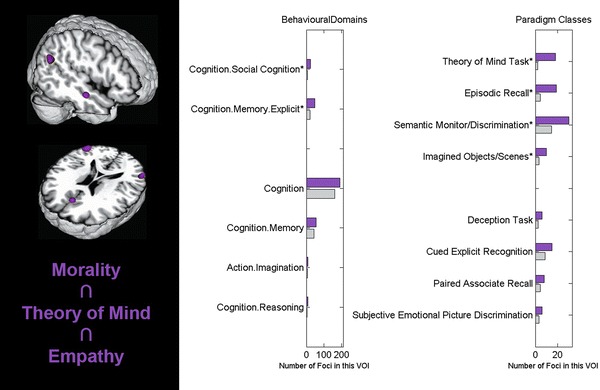Fig. 3.

Functional characterization of the core-network implicated in moral cognition, theory of mind (ToM), and empathy. Left neural network consistently activated across individual meta-analyses on moral cognition, ToM, and empathy (extent threshold: k = 10 voxels to exclude presumably incidental results). Images were rendered using Mango (multi-image analysis GUI, Research Imaging Institute, San Antonio, Texas, USA; http://ric.uthscsa.edu/mango/). Right functional characterization of the convergent network across all three tasks by BrainMap metadata. The purple bars denote the number of foci for that particular metadata class within the seed network. The grey bars represent the number of foci that would be expected to hit the particular seed network if all foci with the respective class were randomly distributed throughout the cerebral cortex. That is, the grey bars denote the by-chance frequency of that particular label given the size of the cluster. All shown taxonomic classes reached significance according to a binomial test (p < 0.05). Asterisks denote classes that survived the Bonferroni correction for multiple comparisons
